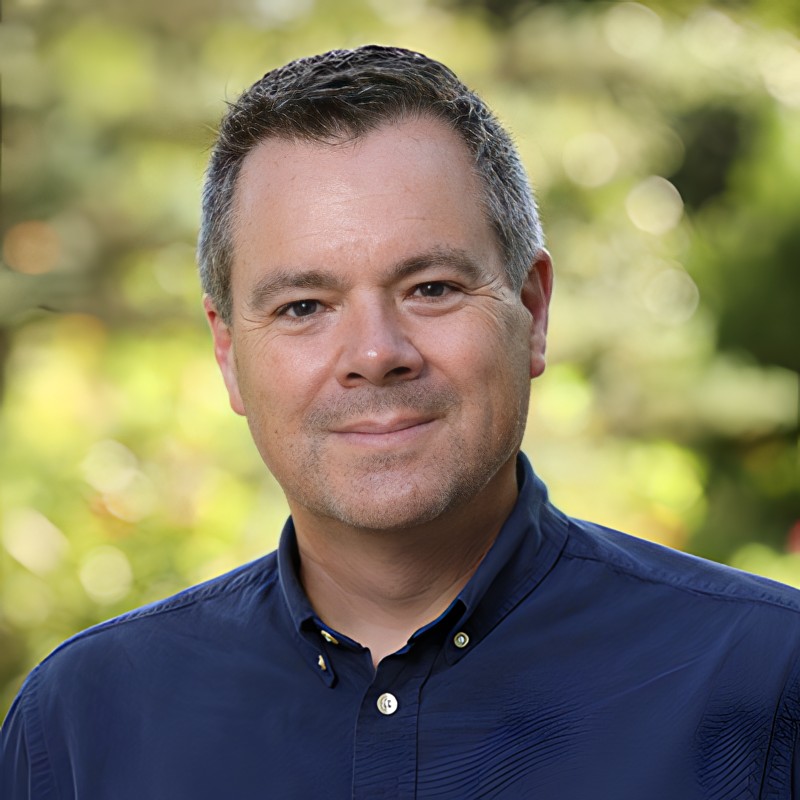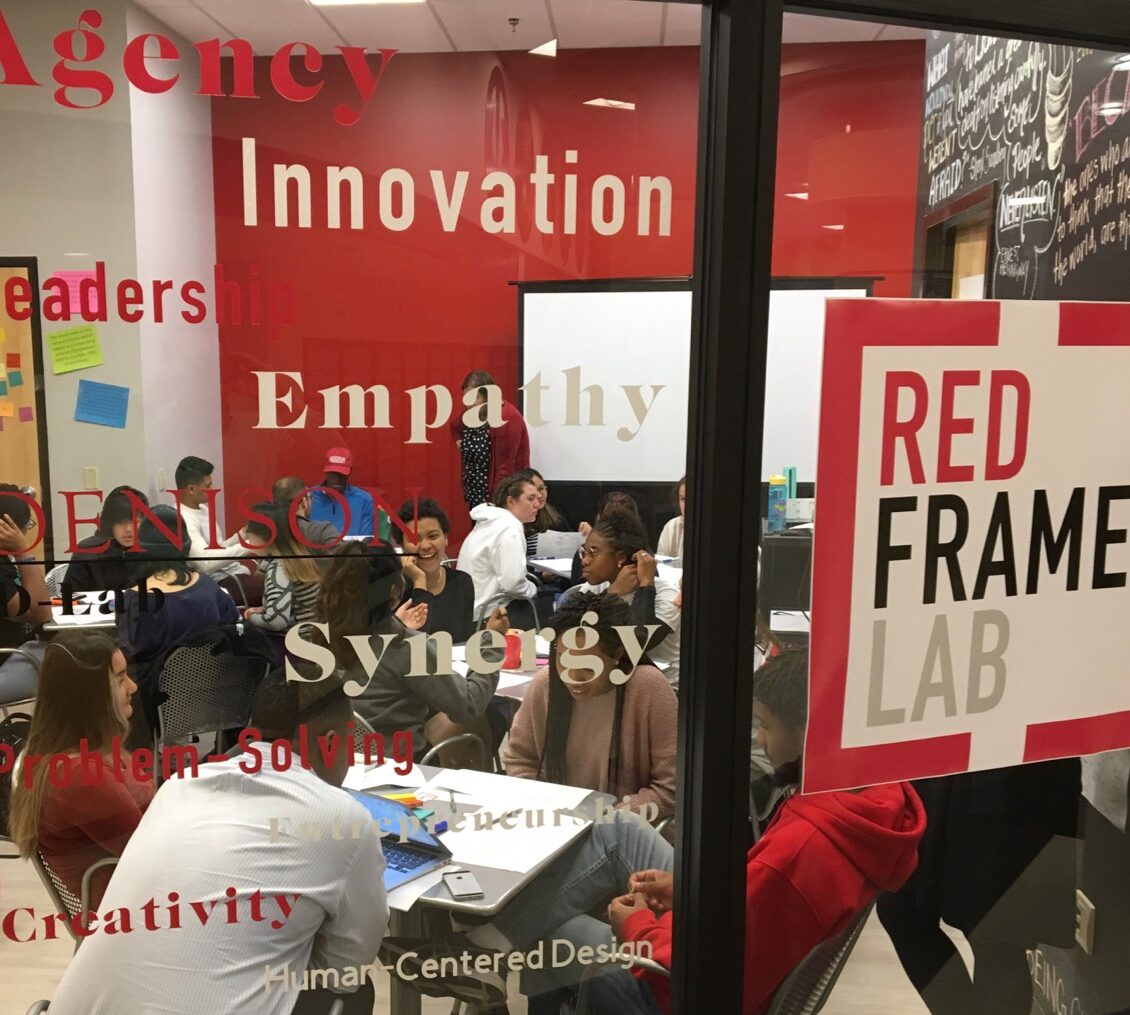By Tim Chartier
Established in 2017, Denison University’s Red Frame Lab builds on the college’s liberal arts tradition by equipping students with entrepreneurial and design thinking skills. Through coaching, innovative programs, and real-world projects, students strengthen their education and prepare for meaningful careers and lives. With a growing focus on data science and entrepreneurship, they build portfolios, connect with alumni and industry leaders, and gain a competitive edge for professional careers or further studies. Tim Chartier spoke with Steve Krak, director of the Red Frame Lab, to learn more.

Tim Chartier: You direct the Red Frame Lab at Denison University. What is the Red Frame Lab?
Steve Krak: It’s Denison’s co-curricular resource for experiencing your possible futures—through entrepreneurship, innovation, design thinking, and consulting. We offer short and semester-long programs where students explore launching a business, solving “squishy” problems for “squishy” clients, and designing solutions that matter to them.
TC: “Squishy” is an interesting term. Can you explain that and share more about Red Frame’s history?
SK: “Squishy” refers to problems and clients that are a bit ambiguous—real-world, complex, and often messy. We began in 2017 within Student Life, asking questions like, “What would entrepreneurship look like at Denison?” and, “What if the whole campus were a design studio?” In 2018, we launched RED Corps Fellows—select student roles focused on professional development and campus problem-solving. During COVID, we created a student consulting experience that became a signature offering. In 2024, we moved to the Knowlton Center’s career cluster, aligning with our focus on professional preparation, though our work across campus continues unchanged.
TC: What’s your background, and how did it prepare you for this role?
SK: I considered engineering and education as an undergrad, ultimately choosing engineering. I worked at Battelle, an R&D company, for 25 years—starting in the lab, then moving through project management, business development, and intellectual property management. I also got involved with educational efforts, including leading the Ohio STEM Learning Network, which partnered Battelle, the Gates Foundation, and state-level stakeholders. Eventually, I transitioned into consulting, contributing to initiatives like designing Egypt’s first public STEM schools and numerous domestic projects.
In 2017, Denison’s Provost invited me to explore this new lab. I was the first hire. It started as a part-time side project that I loved. My industry and consulting experience shaped how I design professional experiences that employers value and students enjoy—while allowing me to pursue my passion for education, minus the grading.
TC: How do you approach building campus partnerships?
SK: Externally, we have a fantastic connector on our team, Rick Coplin. He recruits partners to serve as clients or mentors. Clients bring real, challenging problems; mentors share their expertise with student teams. It’s a structure that brings authenticity but requires careful scaffolding to ensure meaningful learning. Mentors receive modest stipends, and while clients currently don’t pay, that may evolve.
Internally, I’ve built long-term relationships with faculty. I promise not to add to their learning outcomes but to amplify them. We might include modules on project management, design thinking, or presentations, enhancing project quality and learning. This has led to collaborations in Data Analytics, Global Commerce, Environmental Studies, Philosophy, Computer Science, Athletics, and more. There’s still room to grow, but we’re building momentum.
TC: What advice do you have for fostering strong student teams?
SK: We formalized our approach at faculty request. I emphasize structure: schedule regular meetings up front, stick to one communication channel and one document hub. Meetings need purpose, process, and payoff—always have an agenda. We start each meeting with a “check-in” where everyone shares what they’ve done, what they’re doing next, and what they need from others. It’s awkward at first, but it drives accountability and collaboration.
TC: Does the length of a project affect team dynamics?
SK: Absolutely. Quick projects offer clarity and focus. Longer projects demand discipline since, over time, engagement can waver, clients may shift expectations, and the team may drift. That’s why consistent structure and communication are vital in longer-term efforts.
TC: What is design thinking, and why is it central to your work?
SK: Design thinking is a semi-structured, human-centered process. It forces us to deeply understand the people we’re designing for. That understanding can reframe the whole problem. For instance, a jobs program might fail if it ignores housing instability. Design thinking focuses every phase—empathizing, reframing, ideation, prototyping, testing—on learning more about the stakeholder. It encourages brainstorming (divergent thinking) before narrowing ideas and promotes early testing to refine solutions. Because it’s people-focused, it’s relevant across many future paths. That’s why it’s a core toolset for us.
TC: How can educators bring design thinking into their classrooms?
SK: You don’t need to be an expert. Even introducing basic design thinking concepts can help students reframe challenges. I use it to help students develop better interview questions, define project scope, or design presentations with the audience in mind. Tools like divergent/convergent thinking, prototyping, and stakeholder feedback can enhance any project-based work, reinforcing classroom goals in new ways.
TC: Any final thoughts?
SK: From outside higher ed, I’ve learned how to design experiences that resonate with employers—not because of content mastery, but because students show professional discipline: teamwork, process thinking, communication. Those are rare and valuable. We “dogfood” our own model, using design thinking to meet students where they are, giving them the tools they’ll need—often without them realizing how much they’re learning. If we help students do the jobs they want to do, we can also teach them the skills we know they’ll need when they launch from college.

Tim Chartier is the Joseph R. Morton Professor of Mathematics and Computer Science at Davidson College, specializing in numerical linear algebra and data analytics. He consults for businesses and organizations, including ESPN, the New York Times, the US Olympic Committee, and professional sports teams. He’s received national awards for his teaching and research. Tim has also engaged in K-12 education initiatives with Google and Pixar.
